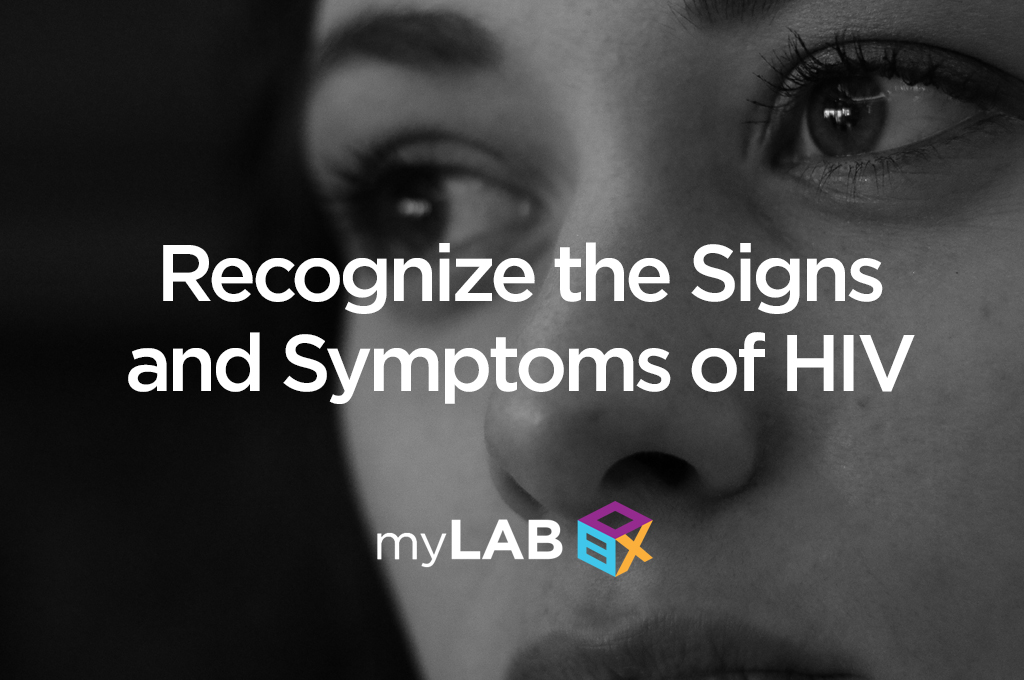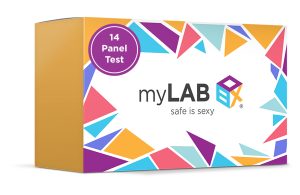Recognizing Signs and Symptoms of HIV

Let’s talk about the signs and symptoms of HIV. As one of the most common sexually transmitted infections in the United States, knowing how to detect Human Immunodeficiency Virus is more important than ever before. It can affect anyone, regardless of race, gender, age, or sexual orientation. And unfortunately, the number of reported cases is on the rise.
A recent report from the Centers for Disease Control and Prevention states that there are over one million Americans currently living with HIV. Ultimately, this virus can lead to Acquired Immunodeficiency Syndrome or AIDS.
Throughout this article, we’ll examine the common signs and symptoms of HIV.
Recognizing the Signs and Symptoms of HIV
HIV tends to be one of the more complicated sexually transmitted infections. Typically, it affects the body in three distinct phases.
HIV Phase 1: Acute Illness
Your first HIV symptoms may become visible within two-to-four weeks after the initial infection. That said, it is quite possible that you may not experience any signs or symptoms of HIV during this phase at all.
The most common symptoms of the acute phase may include:
-
- body rash
-
- fever
-
- sore throat
-
- severe headaches
-
- fatigue
-
- swollen lymph nodes
-
- ulcers in the mouth or on the genitals
-
- muscle aches and joint pain
-
- nausea and vomiting
- night sweats
As you may have noticed, many of the signs and symptoms of HIV are similar to the flu. To make matters worse, many people with the virus may not experience any symptoms at all. That can be dangerous. Many people completely miss the possibility that they might be infected with HIV. This can last for years.
HIV Phase 2: Asymptomatic Period
Speaking of signs and symptoms of HIV not being visible, next comes the Asymptomatic Period. This second phase can potentially last for ten years or more. After the temperamental “Acute Illness” stage, an individual who is HIV positive may go for years without seeing another symptom.
While in this stage, the virus is very much still active inside your body. You may not feel sick, but HIV is still replicating inside you and damaging your immune system.
HIV Phase 3: Advanced Infection
If you haven’t been treated yet, the infection may move into the Advanced Infection stage. It is the “last” stage of HIV. By this period, your immune system has taken a lot of damage. In its highly weakened state, you will be more susceptible to a number of other illnesses. This is the stage that is often characterized as AIDS.
During this stage, you might experience the following AIDS symptoms:
-
- nausea
-
- vomiting
-
- diarrhea
-
- fatigue
-
- rapid weight loss
-
- shortness of breath
-
- fever
-
- chills
-
- night sweats
-
- rashes, sores, or lesions
-
- swelling of the lymph nodes in the armpits, groin, or neck
- memory loss, confusion, or neurological disorders
Women and HIV
While HIV can affect men, there are a few HIV symptoms that women specifically need to know about:
-
- Increased frequency of vaginal yeast infections
-
- Abnormal menstrual cycles
-
- Severe pelvic inflammatory disease (PID)
- An increased risk of cervical cancer
If a woman is pregnant, the virus may be passed on to her child. This often occurs during childbirth or while breastfeeding. On the plus side, it is possible to lower the risk of transmission from mother to child with treatment.
PrEP: Your Suit of HIV Armor
Using a condom during any sex act can seriously reduce the possibility of contracting HIV, but as you may well know, condoms aren’t a perfect solution. For one, they break. It’s simply a fact of life. However, all is not lost. There are other ways of protecting ourselves.
One powerful new defense against the spread of HIV is a medication called PreP. This daily pill can actually prevent HIV infection when taken properly. Often, partners of people who are HIV positive take this medication as a way to prevent contracting the infection. If taken regularly, PrEP can drop your risk of HIV infection by up to 92 percent.
To learn more about this amazing new preventative treatment, check out our detailed guide about PrEP and HIV.
Fight Back: Testing and Treatment
Today we explored the most common signs and symptoms of HIV. Sadly, HIV is not curable at this point. As you can see, it has the potential be a surprisingly thorny infection. It can be difficult to recognize.
So how can you fight back? Well, that’s simpler than you may think. Beginning treatment early can slow the progression of the disease and significantly improve your quality of life. You will be able to live a near-normal life as long as you begin treatment before your immune systems are too severely damaged.
Being tested is the only way to know for sure whether or not you are HIV+. Then, STIs and HIV can get diagnosed and treated. Early treatment can even help both men and women with HIV to reduce their risk of accidentally passing the virus to their partners. Our recent “Guide to HIV Testing” blog post is an excellent starting point for your quest for testing.
Testing is quick and easy. You can order an at-home HIV testing package from myLAB Box. These tests offer lab-certified results that can be checked discreetly online.
Popular Tests

Total Box
14 Panel STD Test
In Stock – Free Shipping
$369 – $399
